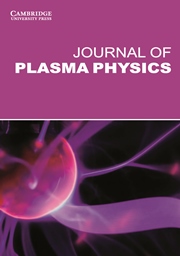No CrossRef data available.
Article contents
Excitation of heater-enhanced plasma and ion lines near the reflection level of a high-frequency pump wave
Published online by Cambridge University Press: 31 January 2002
Abstract
A theory of enhanced plasma and ion lines near the reflection height of a pump wave is presented. It is argued that the high-frequency pressure of the pump wave and the averaged pressure of plasma waves localized in small-scale cavitons contribute to the rapid creation of a cavity in the main Airy maximum. Langmuir waves excited later by parametric decay instability are trapped in such a nonstationary cavity. Analytical expressions for adiabatic eigenmodes of Langmuir waves in a nonstationary cavity are presented. Collisionless attenuation of the eigenmodes of Langmuir waves trapped in the cavity is investigated. It is shown that parametric decay instability in a cavity may account for the excitation of plasma and ion-acoustic waves measured by EISCAT UHF radar.
Information
- Type
- Research Article
- Information
- Copyright
- 2001 Cambridge University Press

